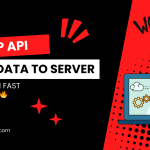The Best Fluffy Pancakes recipe you will fall in love with. Full of tips and tricks to help you make the best pancakes.
The Rise of Edge Computing in IoT
With the exponential growth of connected devices in the Internet of Things (IoT) landscape, the need for efficient data processing and decision-making has become more crucial than ever. Traditional cloud computing models, while powerful, often face challenges in handling the massive volume of data generated by IoT devices in real-time. This is where edge computing comes into play.
Understanding Edge Computing
Edge computing involves processing data closer to the source of generation, i.e., the edge of the network, rather than relying on a centralized cloud server. By distributing computing resources to the edge of the network, edge computing enables faster data processing, reduces latency, and enhances overall system efficiency.
Enhancing Real-Time Data Processing
One of the key advantages of edge computing in IoT is its ability to facilitate real-time data processing. By analyzing data locally at the edge devices, organizations can extract valuable insights instantly without the need to transmit all data to the cloud for processing. This not only reduces latency but also helps in making time-sensitive decisions promptly.
Improving Decision-Making
Edge computing plays a vital role in optimizing decision-making processes in IoT applications. By processing data at the edge, organizations can act on critical information swiftly, leading to faster response times and improved operational efficiency. Moreover, edge computing enables autonomous decision-making capabilities, allowing devices to react autonomously based on predefined rules or machine learning algorithms.
Challenges and Considerations
While edge computing offers numerous benefits in IoT, it also comes with its set of challenges. Managing distributed computing resources, ensuring security at the edge, and maintaining synchronization across edge devices are some of the key considerations that organizations need to address when implementing edge computing solutions.
Conclusion
Edge computing is revolutionizing the way data is processed and utilized in IoT ecosystems. By harnessing the power of edge computing, organizations can achieve enhanced real-time data processing capabilities, improve decision-making processes, and drive innovation in their IoT applications. Embracing edge computing is essential for organizations looking to stay competitive and agile in the rapidly evolving IoT landscape.




